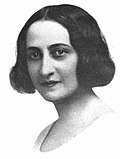Image Laureate Born Died Years Nominated Citation Nominator(s) Chemistry Luis Federico Leloir 6 September 1906 Paris , France 2 December 1987 Buenos Aires , Argentina 1958, 1961, 1962, 1963, 1964, 1965, 1967, 1968, 1969, 1970 [ 6] 36 nominators Physiology or Medicine Ángel Roffo 30 December 1882 Buenos Aires , Argentina 23 July 1947 Buenos Aires , Argentina 1927, 1937, 1940 "for his clinical and experimental studies on cancer ." [ 7] Leonidas Avendaño Ureta (1860–1946) Guillermo Bosch Arana (1889–1939) Eduardo Bello Porras (1870–1947) Bernardo Houssay 10 April 1887 Buenos Aires , Argentina 21 September 1971 Buenos Aires , Argentina 1931, 1934, 1935, 1936, 1937, 1939, 1940, 1941, 1942, 1943, 1944, 1946, 1947, 1948 "for the discovery of the physiological role of the anterior hypophysis in carbohydrate metabolism and diabetes , work on heart sounds, and the relation of the kidney to hypertension." [ 8] 46 nominators Literature Manuel Gálvez 18 July 1882 Paraná, Entre Ríos , Argentina 14 November 1962 Buenos Aires , Argentina 1932, 1933, 1934, 1951, 1952 [ 9] Carlos María Ocantos Ziegler 1860 Buenos Aires , Argentina 1949 Madrid , Spain 1933, 1943 [ 10] Enrique Rodríguez Larreta 4 March 1875 Buenos Aires , Argentina 6 July 1961 Buenos Aires , Argentina 1942, 1943, 1944, 1950 [ 11] María Raquel Adler ca. 1900 Argentine Sea 28 July 1974 Bernal , Argentina 1959, 1965 [ 12] Consejo del Escritor Catholic University of Cuyo Jorge Luis Borges 24 August 1899 Buenos Aires , Argentina 14 June 1986 Geneva , Switzerland 1956, 1962, 1963, 1965, 1966, 1967, 1969, 1970, 1971 [ 13] 26 nominators Victoria Ocampo 7 April 1890 Buenos Aires , Argentina 27 January 1979 Béccar , Argentina 1970 [ 14] Miguel Alfredo Olivera (1922–2008) Peace Ángela de Oliveira Cézar de Costa ca. 1860 Gualeguaychú, Entre Ríos , Argentina 25 June 1940 Buenos Aires , Argentina 1910, 1911 "for her efforts to end the conflict between Argentina and Chile." [ 15] 7 members of the Argentine parliament Carlos Rodríguez Larreta (1868–1926) Estanislao Zeballos 27 July 1854 Rosario, Santa Fe , Argentina 4 October 1923 Liverpool , United Kingdom 1912, 1920, 1922, 1923 7 nominators Luis María Drago 6 May 1859 Mercedes , Argentina 9 June 1921 Buenos Aires , Argentina 1914 "for having initiated the Drago Doctrine that opposed forcible collection of debts in any South American republic through military intervention." [ 16] Ernesto Bosch (1863–1951) Carlos Francisco Melo 1926 Alejandro Mereira (?) Carlos Saavedra Lamas 1 November 1878 Buenos Aires , Argentina 5 May 1959 Buenos Aires , Argentina 1935, 1936 "for having drafted Antiwar Pact of 1934 as a means to secure an armistice in the Gran Chaco War between Bolivia and Paraguay, condemning all forms of aggressive war, and any territorial change not effected by peaceful means was not to be recognized." [ 17] 11 nominators Juan Perón 8 October 1895 Lobos , Argentina 1 July 1974 Olivos, Buenos Aires , Argentina 1949 [ 18] Eva Perón 7 May 1919 Los Toldos , Argentina 26 July 1952 Buenos Aires , Argentina 1949 [ 19] Virgilio Filippo (?) 

















